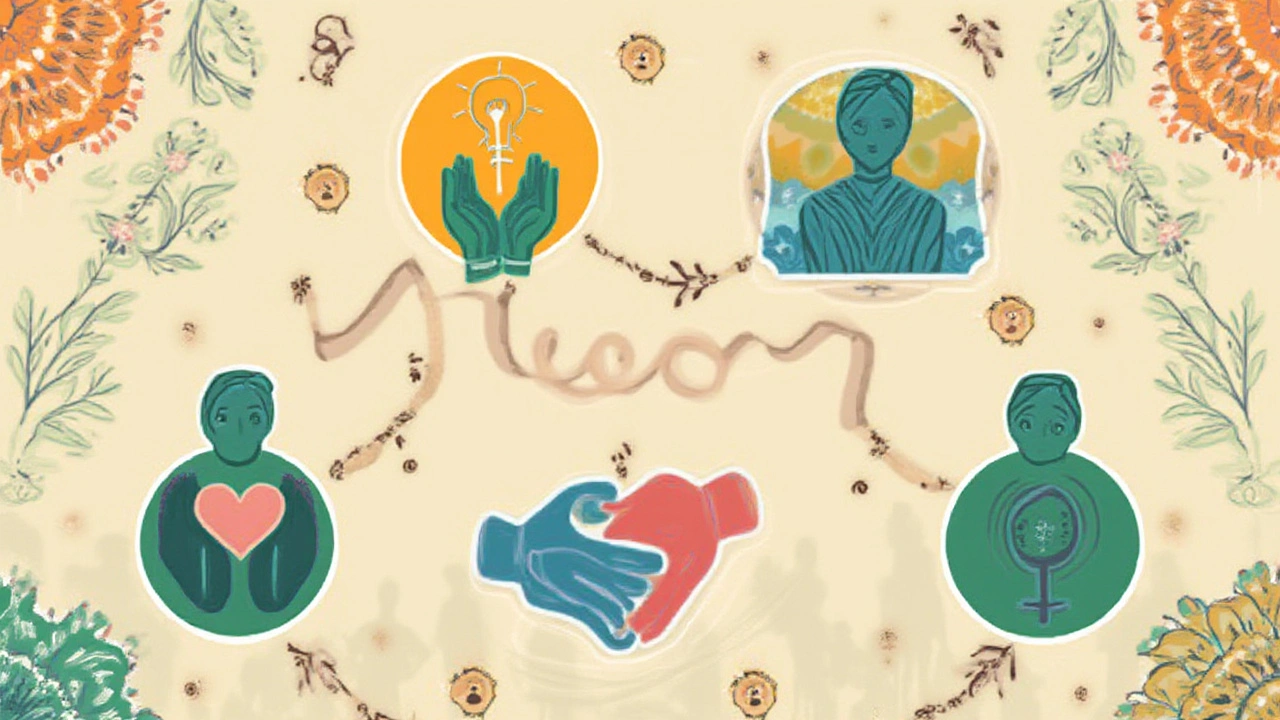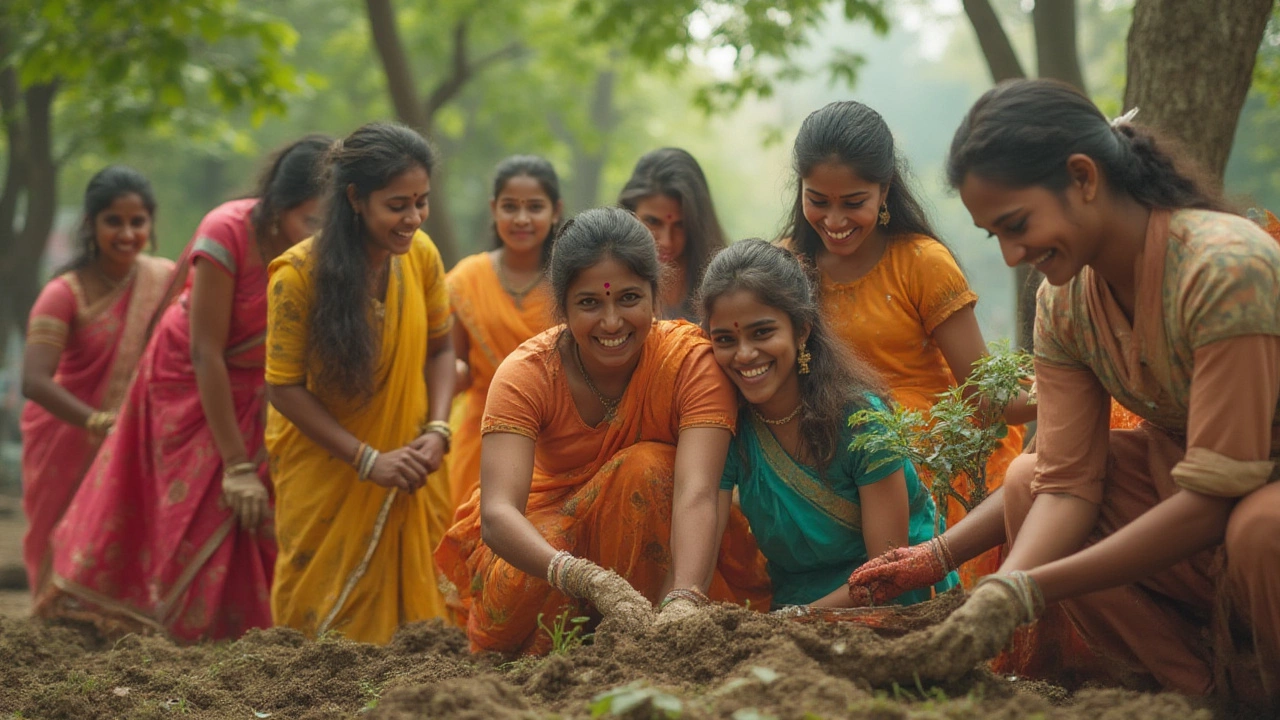Picture a Saturday morning. There’s a community barbecue sizzle at the local park, teens handing out flyers for a dog shelter, a group planting trees by the riverbank. If you stopped to count, would there be more women tying on aprons and rolling up sleeves, or men out with the gloves and shovels? The answer isn’t as obvious as you’d think – but there’s a story written in statistics, ancient history, and the way society ticks. Spoiler: the numbers tell us something about how we see ourselves and each other.
The Numbers Behind Who Volunteers More
If you’ve assumed women volunteer more, you’re onto something: the 2023 Australian Bureau of Statistics found that about 35% of women volunteered at least once in the past year, compared to 28% of men. This trend isn’t unique to Australia. In the United States, women have steadily outnumbered men in volunteering for decades. Volunteer Canada says women make up around 58% of their total volunteer base. Even the UN has noticed it, especially when it comes to social services or school activities — women lean into hands-on, people-focused support, while men are a bit more likely to help out at sporting clubs or with physical labor.
But let’s not get too comfortable with the stereotypes. While more women volunteer, the difference narrows as people get older. Among retirees, the gap between men and women shrinks. There’s also the point that men still outnumber women in leadership roles in big service organizations, like Rotary or Lions Clubs. Check out this breakdown of gender volunteer trends in top volunteering countries for a clearer picture:
| Country | % Female Volunteers | % Male Volunteers | Most Popular Volunteer Sectors (Women) | Most Popular Volunteer Sectors (Men) |
|---|---|---|---|---|
| Australia | 35% | 28% | Schools, Fundraising, Care Services | Sport, Environment, Disaster Relief |
| USA | 31% | 23% | Health, Education, Food Banks | Sports, Mentoring, Emergency Services |
| UK | 40% | 33% | Support Groups, Events, School | Clubs, Environment, Faith Groups |
Why Does Gender Matter in Volunteering?
You might be wondering why this gap exists in the first place. Until the late 20th century, volunteering wasn’t always seen as gender neutral. A lot of the unpaid care, from soup kitchens to classroom reading, has been seen as an extension of what women were already expected to do at home. This idea stuck around, even as more women joined the paid workforce. In fact, surveys show that women often juggle jobs, family, and still find time to volunteer. It’s wild but true: the stereotype of women as caregivers spills into the way they spend their free time.
Men, on the other hand, tend to sign up when their skills get called on for building stuff, coaching sports, or mentoring youth. There’s a bit of traditional thinking mixed in, where men are expected to join committees or take on leadership roles. There’s also the ‘shoulder tap’ effect — people get asked to volunteer by someone they know, and these asks tend to travel along gendered lines. People are more likely to recruit women for canteen duty or selling raffle tickets. Men are nudged toward the barbecue, traffic control, or the cricket club.
There’s room for everyone in volunteering, though. Nonprofits that make roles flexible and break away from those old gender-based norms keep both men and women coming back—and attract younger volunteers who care less about labels and more about impact. When my husband Lucas and I volunteer for local clean-ups, we always see more women than men at the sign-in booth, but once the rubbish bags come out, everyone’s just getting the job done together.

Different Motivations, Shared Goals
What drives people to give their time? Here’s the fun part: men and women aren’t all that different. The 2022 National Volunteering Survey in Australia said women were more likely to say they “wanted to help,” and loved building friendships. Men sometimes mentioned using their skills, or just having fun (barbecue tongs, anyone?). Yet, both groups said feeling useful and making a difference was key.
A helpful tip for organisations: keep it varied. Mix up the types of volunteer roles offered. Jobs that involve working with people attract everyone, but giving folks a choice between remote admin, tech support, mentoring, hands-on builds, or event planning means you won’t miss out on great talent. The old school thinking that “women bake cakes, men hang flags” is fading (finally!), especially with more people seeking non-traditional roles or wanting flexible hours to fit volunteering around busy schedules.
Here’s something else that surprised researchers—young men and women volunteer at similar rates, but young women are more likely to stick with it over time. There’s also a strong link between having kids and volunteering: parents (no matter their gender) are more likely to be roped in, though mums still do most of the heavy lifting when it comes to school-related projects.
The Impact of Changing Times and Culture
You can’t talk about volunteering without talking about how much things have changed. Cultural expectations are different all over the world, and even inside Australia, city people volunteer differently than those in the bush. According to 2024 Volunteering Australia data, rural communities have a higher overall volunteer rate between both genders, with men and women teaming up to run events, fix up footy grounds, or respond to emergencies.
Technology has played a big role too. More men are taking up remote mentoring positions—especially in STEM outreach and job training—thanks to online platforms that make volunteering easy from the couch. Women continue to dominate in community support work and fundraising, but interest from men is trending up, especially since the COVID-19 pandemic put a spotlight on community care and connection.
Within culturally diverse communities, gender roles sometimes flip. In some South Asian and Middle Eastern Australian groups, men are more visible at public charity events, while women work behind the scenes. The main thing? When communities put equal value on different kinds of volunteering, everyone gets more involved.
If you’re in a leadership position at a charity or club, it pays to challenge the old habits. Notice who’s always first to put their hand up, and look for ways to invite new faces—including dads, brothers, and grandads—into spaces that might have felt women-only for years. Flip the script for jobs seen as “blokey” too. The most successful volunteer programs break down barriers and make it less about gender, more about passion and skill.

Tips for Getting More People Involved – No Matter Their Gender
So, maybe you’re looking for ways to get more men into the canteen, or women into committee roles. Maybe you just want more hands on deck, period. Here’s what’s working right now for charities, schools, and community clubs:
- Emphasize the impact of volunteering—show real stories of change, not just generic calls for help. If people know their time actually matters, they’re more likely to stick around.
- Offer flexible shifts and tasks. Not everyone can give a whole Saturday, but maybe an hour every month? Split up jobs by interest, not by outdated ideas of who should do what.
- Get specific. If you need someone to edit a newsletter, run a sausage sizzle, or help kids with homework, ask for that! People are more likely to pitch in if they know exactly what’s needed.
- Make it social. People keep coming back for the friendships. Build volunteering around coffee breaks, group challenges, or even online chat groups. Community is key.
- Rethink recruitment. Don’t just tap the same mums or dads every year. Create new pathways for people who might not feel invited (yet).
- Celebrate all types of contributions, whether it’s one-off help or long-term commitment. Public thanks goes a long way and encourages repeat involvement.
Noticed how there are fewer men at your local fundraiser, or hardly any women running the weekend soccer? Break the mold. Invite someone new next time—the results might surprise you.
